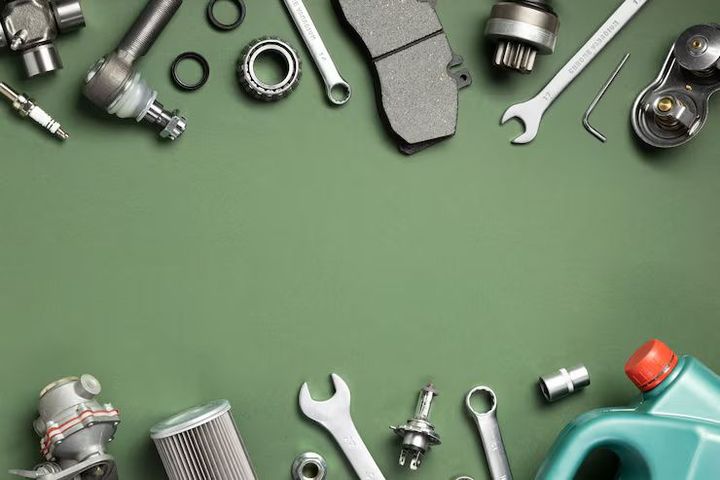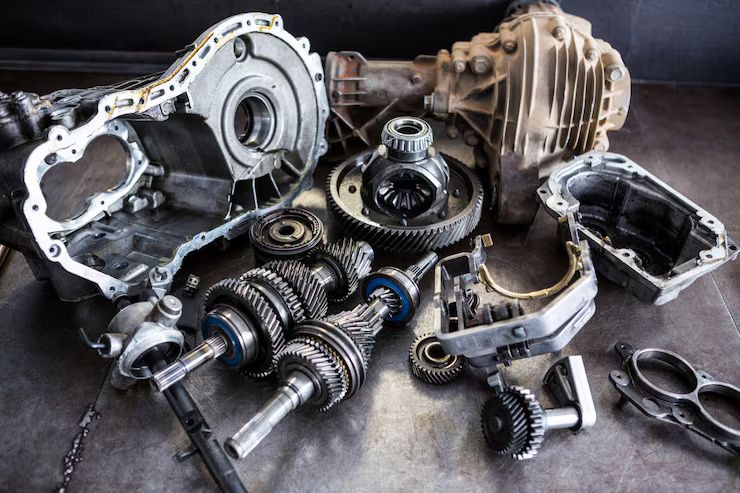
Heavy Equipment Spare Parts Overview: Essential Knowledge, Key Functions, and Maintenance Insights
Heavy equipment spare parts are the individual components that support the functioning of machines used in construction, mining, agriculture, energy, industrial automation, and material handling. These parts exist to maintain equipment reliability, ensure operational continuity, and extend machine lifespan. Spare parts include mechanical components such as filters, gears, bearings, hydraulic parts, electrical systems, control modules, safety components, and engine-related parts.
Industrial sectors operate with machines that face continuous stress, varying load conditions, and environmental challenges. Over time, these machines experience natural wear, making parts replacement essential. Without timely component support, heavy equipment can experience breakdowns, unexpected downtime, and reduced productivity. The development of standardized parts, advanced materials, and smarter monitoring systems has made spare parts a critical part of modern equipment management.
As industries shift toward automation, digital monitoring, and intelligent asset control, the role of spare parts continues to evolve. Today, parts are not only mechanical replacements but also crucial elements in predictive maintenance systems, equipment optimization, and long-term asset management strategies.

Importance
The importance of heavy equipment spare parts extends across several sectors and stakeholders. Operators, maintenance teams, industrial engineers, and safety inspectors depend on reliable components to maintain operational continuity and workplace safety.
These parts matter because they help:
-
Prevent equipment failure
Components such as filters, seals, and sensors prevent contamination, overheating, and mechanical stress. -
Improve machine performance
High-precision assemblies and upgraded components support engineering optimization and equipment efficiency. -
Enhance safety compliance
Brake components, structural parts, control modules, and protective systems help reduce risks associated with heavy machinery operations. -
Support long-term asset planning
Predictive maintenance tools and condition-based monitoring rely on accurate spare-part compatibility and data. -
Reduce environmental impact
Well-maintained machines operate with improved fuel efficiency and lower emissions, contributing to sustainability goals.
Industries affected include construction, mining, logistics, agriculture, road development, manufacturing, ports, and infrastructure development. The availability and proper maintenance of spare parts solve problems such as downtime, safety hazards, reduced productivity, and inconsistent equipment performance.
Recent Updates
The heavy equipment and industrial parts sector has seen several updates in the past year (2024–2025), reflecting technological advancements and changing industrial expectations.
Rise of predictive maintenance (2024–2025)
Many equipment manufacturers have shifted toward predictive maintenance models using IoT-enabled sensors, digital diagnostics, and AI-based analysis. These systems help detect part degradation early, reducing mechanical failures and unplanned downtime.
Increased demand for energy-efficient components (2024)
Industries focused on sustainability now use high-efficiency hydraulic pumps, low-friction bearings, and optimized engine components to reduce energy consumption.
Trend toward digital parts catalogues (2024–2025)
Most companies adopted 3D interactive catalogues, QR-based identification systems, and digital asset data sheets to simplify maintenance planning.
Global supply chain normalization (mid-2024)
After several disruptions in previous years, the supply chain for mechanical and electronic components has stabilized, improving availability of heavy machinery parts.
Regulatory tightening on safety components (2025)
Multiple countries strengthened requirements for critical safety components—especially braking parts, rollover protection structures, hydraulic line fittings, and electrical insulation components.
Growing interest in recycled and remanufactured parts (2024)
Environmental initiatives encouraged the use of remanufactured components when permissible and safe, reducing waste and improving sustainability metrics.
Laws or Policies
Heavy equipment spare parts are influenced by regulations concerning safety, emissions, material quality, manufacturing standards, and workplace compliance. Policy areas affecting the sector include:
Safety standards and compliance codes
Most countries follow industrial safety frameworks requiring machines to maintain certified braking systems, structural parts, and hydraulic components. Regulations ensure that parts meet quality and durability expectations to prevent workplace accidents.
Environmental regulations
Engine and emission-related components must align with national pollution-control standards. Maintenance teams must use parts that support clean fuel combustion and reduced emissions.
Import and material standards
Countries regulate the import of mechanical and electronic components to ensure they meet engineering quality norms. This includes requirements on material grades, durability testing, and component traceability.
Hydraulic and pressure-equipment rules
Hydraulic hoses, fittings, valves, and cylinders must comply with pressure ratings, safety factors, and leak-prevention standards defined by industrial authorities.
Electrical safety regulations
Parts involving wiring, sensors, connectors, and controllers must follow electrical safety codes to prevent short circuits, overloads, and equipment damage.
These policies reinforce safe machine operation, responsible maintenance practices, and the long-term reliability of industrial assets.
Tools and Resources
Professionals working with heavy equipment spare parts often rely on digital platforms, monitoring tools, and technical resources to support maintenance planning and part identification.
Helpful tools include:
-
Equipment maintenance apps
For scheduling inspections, tracking machine hours, and logging component replacements. -
Predictive maintenance platforms
AI-based systems that analyze vibration, temperature, and pressure data to estimate part wear. -
Digital parts catalogues
Used to identify components using equipment model numbers, diagrams, or 3D visualization. -
Inventory management tools
Software that helps organizations track available parts, record usage, and plan replenishment. -
Diagnostic scanners
Tools that read machine fault codes and identify issues related to sensors, control units, and electrical components. -
Maintenance checklists and templates
Standardized forms used by technicians to conduct visual inspections or record performance data. -
Technical manuals and specification sheets
Important references containing torque values, compatibility notes, material requirements, and installation procedures.
These tools help improve the accuracy, efficiency, and reliability of heavy equipment maintenance activities.
FAQs
What are the most common heavy equipment spare parts?
Common parts include filters, hydraulic hoses, cylinders, seals, engine components, electrical sensors, bearings, belts, cutting edges, undercarriage parts, and control modules. These components ensure operational stability and safety.
How often should heavy equipment parts be inspected?
Inspection frequency depends on machine usage, environment, and manufacturer recommendations. Many industries follow routine checks daily, weekly, and during planned maintenance intervals. High-wear components require more frequent observation.
Why is compatibility important when selecting parts?
Using the correct component ensures proper performance, structural integrity, and safety compliance. Incompatible parts can cause accelerated wear, equipment imbalance, or operational failures.
Are digital monitoring tools useful for spare-part planning?
Yes. Predictive maintenance technology and IoT sensors help track real-time machine conditions, enabling better planning for replacements and reducing unexpected downtime.
What factors influence heavy equipment part durability?
Durability is affected by material quality, operating environment, load conditions, maintenance frequency, and adherence to installation guidelines.
Conclusion
Heavy equipment spare parts form a crucial foundation for machine performance, safety, and long-term asset management. They play a vital role in construction, mining, agriculture, manufacturing, logistics, and infrastructure development by ensuring operational continuity and equipment reliability. Recent advancements in predictive maintenance, digital catalogues, and safety regulations continue to shape how industries manage these components.
As machines become more advanced, spare part management also evolves, emphasizing accurate identification, regular inspection, and adherence to safety standards. By understanding the purpose, importance, and latest trends related to heavy equipment components, industries can strengthen their maintenance strategies and support stable, efficient, and safe operations.





